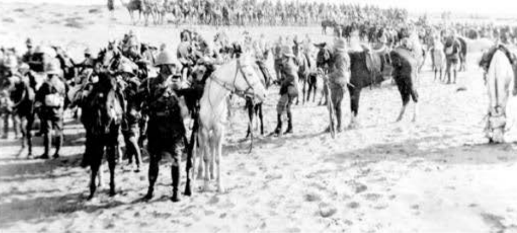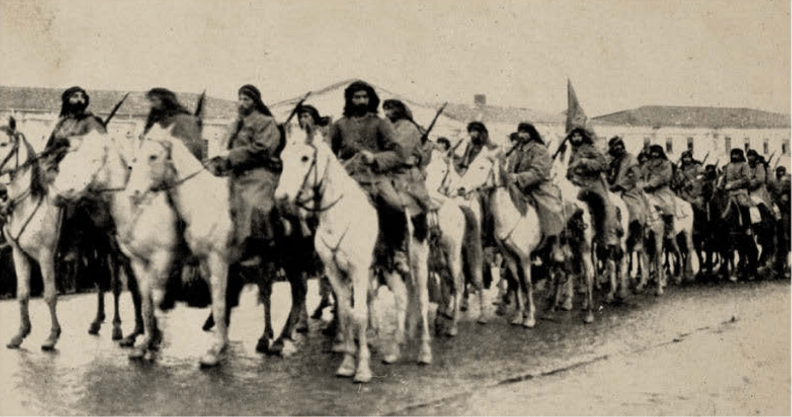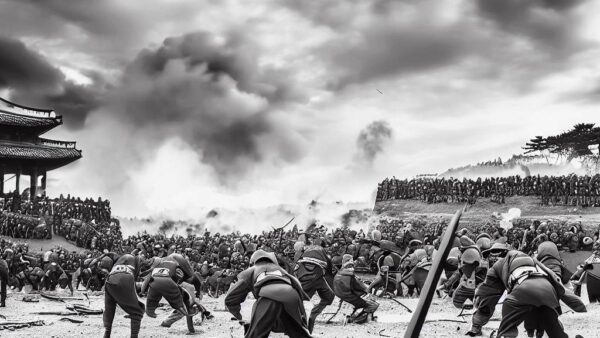Ottoman Empire 1914 – MON 21 DEC 1914 –FRI 04 AUG 1916
Ottoman Empire 1914 – Offensive in the Caucasus
The Ottoman empire’s (Turkey’s) involvement in November 1914 gave the Allies bright new opportunities. Turkey has long been considered the “sick man of Europe,” with its regions ready for splintering. Russia had ambitions to take over Constantinople: the seizure of the Ottoman capital would allow its ships to pass unhindered from the Black Sea to the Mediterranean. Britain and France wanted to enlarge their respective Middle Eastern empires at Turkish expense. The Turks had mostly performed poorly in the Balkan Wars (1912–13), and their vast empire suffered from inadequate railways and roads, but the Ottomans were to prove a tougher enemy than expected.
Supported by German officers, some Turkish commanders were highly competent; their soldiers tough and resourceful. On 21 December 1914 the Turks launched a major offensive against the Russians in the Caucasus. The Ottoman Third Army, comprised of three weak corps (about 66,000 fighting men), had to struggle against the harsh environment, mountainous terrain and appalling weather, as well as the enemy. Ottoman logistics were poor in the extreme, and their soldiers often lacked basic necessities such as warm clothing to protect against the snow.

Russian Counteroffensive in the Caucasus
The Gallipoli battle started in part by a request from the Russian high command to the British and French on January 2, 1915. Despite being under initial attack, the Russians, with around 77,000 effectives, were able to contain the Turkish assaults. Then, in late December, the Russians struck back. The Russians severely damaged two out of three Turkish corps, and subsequently pushed further forward to Lake Van.


Ottoman Empire 1914
Another major offensive began in the Caucasus in January 1916, when Russian forces commanded by General Nikolai Yudenich drove on to Ottoman soil and captured the cities of Erzurum (in February), Trebizond (April) and Erzingham (July). The Russians and Turks had disputed these territories for two centuries, and these were spectacular advances over them. Having suffered calamitous losses, the Ottomans rushed reinforcements to the Caucasus. The Russians were at the end of a prolonged and precarious supply chain in August and September, and they were unable to continue their push.


British Advance in Sinai and Palestine
At another extremity of their Empire, in February 1915 the Turks tried to take the Suez Canal. Egypt was critical to the security of the British Empire. Possession of the Canal meant that ships sailing for Britain’s southern hemisphere possessions could avoid a long detour around the southern tip of Africa. This made it a potentially significant development when the Turks proceeded along the main route over the Sinai desert.
Especially as a British defeat might have triggered an uprising in Egypt by Arab dissidents. In the event, the British easily defeated the attack on the Canal. Subsequently, it made strategic sense for the British to carry out forward defense. They smashed a fresh Ottoman advance 32 kilometers (20 miles) from the Canal at the Battle of Romani (August 1916). The British victory set the scene for their advance westwards across the Sinai into Palestine.

Originally posted 2023-10-21 13:11:46.




